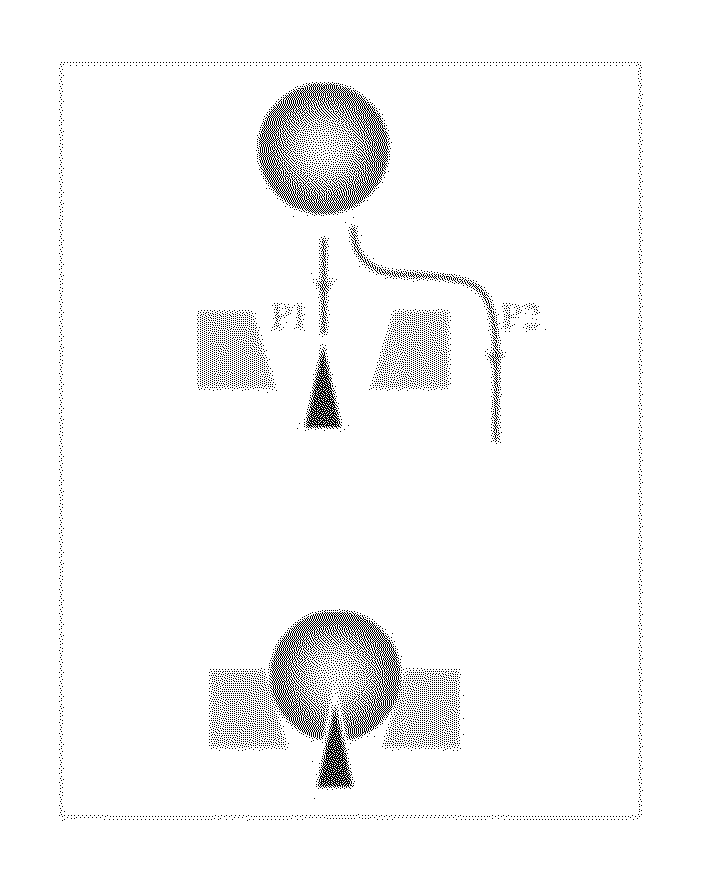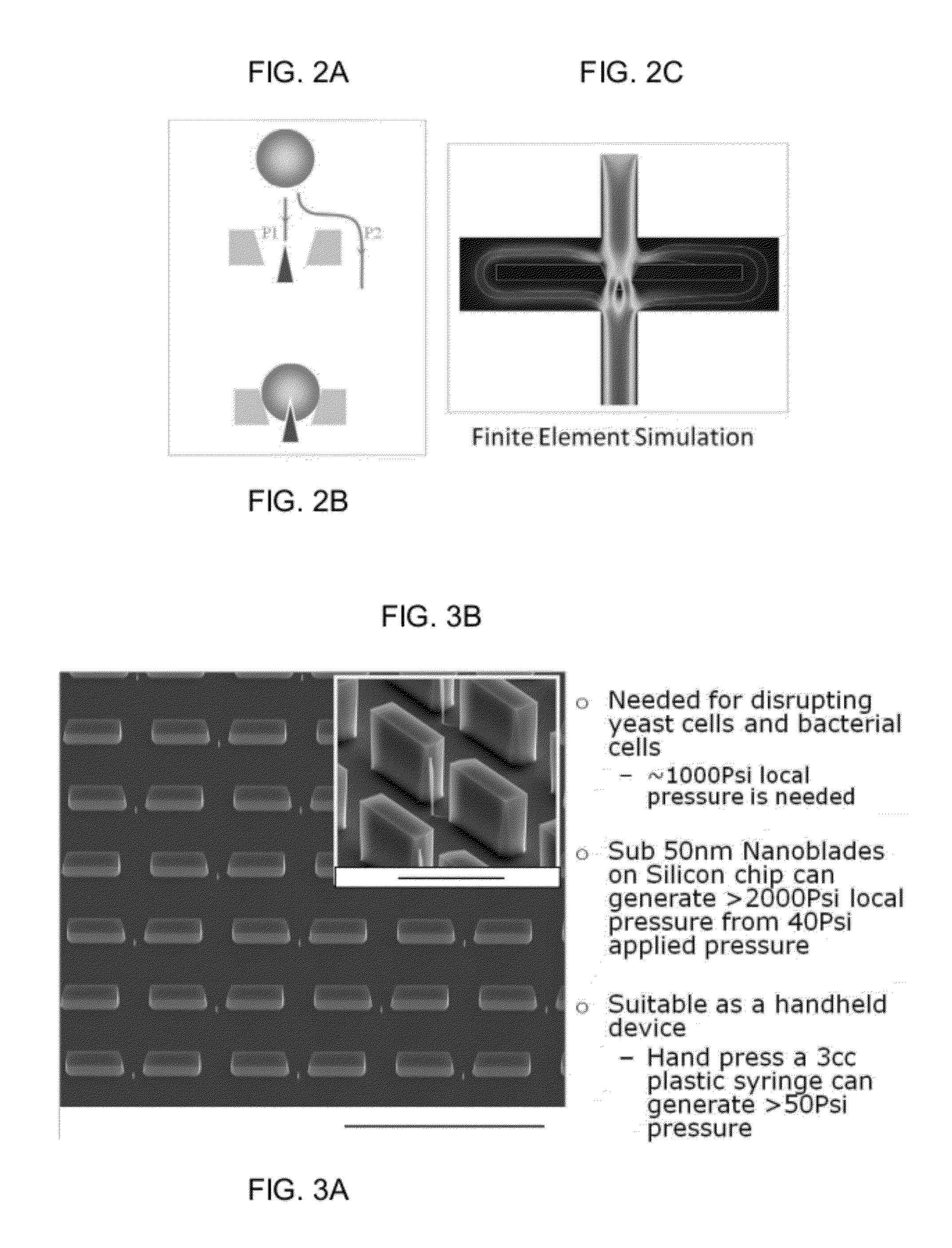Handheld low pressure mechanical cell lysis device with single cell resolution
a mechanical cell and resolution technology, applied in the field of biological material processing, can solve the problems of high operating pressure, bulky, expensive and complex equipment, and cannot be used in portable devices for point-of-care diagnostics, environmental monitoring and pathogen detection,
- Summary
- Abstract
- Description
- Claims
- Application Information
AI Technical Summary
Benefits of technology
Problems solved by technology
Method used
Image
Examples
Embodiment Construction
[0042]This invention provides a handheld mechanical cell lysis device with single cell resolution which requires very low applied pressure (less than 5 psi for mammalian cells, less than 40 psi for yeast cells). The device is small, simple to operate, requires no external power except for hand-applied pressure via a syringe, and is applicable to all cell types including yeast and bacterial cells. The operation of the device is based on low Reynolds number hydrodynamic flow which can deterministically route cells to predefined locations on a microfluidic chip where shear force or local pressure is high enough to rupture the cells. Enough shear force to cause a cell membrane to rupture under modest externally applied force can be attained by providing a structure comprising a stress raiser. Two mechanisms are used to generate high enough forces to break cell membranes or cell walls on-chip. In the first approach, by simply narrowing the flow channel width at predefined lysis positions...
PUM
| Property | Measurement | Unit |
|---|---|---|
| pressure | aaaaa | aaaaa |
| diameter | aaaaa | aaaaa |
| pressure | aaaaa | aaaaa |
Abstract
Description
Claims
Application Information
 Login to View More
Login to View More - R&D
- Intellectual Property
- Life Sciences
- Materials
- Tech Scout
- Unparalleled Data Quality
- Higher Quality Content
- 60% Fewer Hallucinations
Browse by: Latest US Patents, China's latest patents, Technical Efficacy Thesaurus, Application Domain, Technology Topic, Popular Technical Reports.
© 2025 PatSnap. All rights reserved.Legal|Privacy policy|Modern Slavery Act Transparency Statement|Sitemap|About US| Contact US: help@patsnap.com



